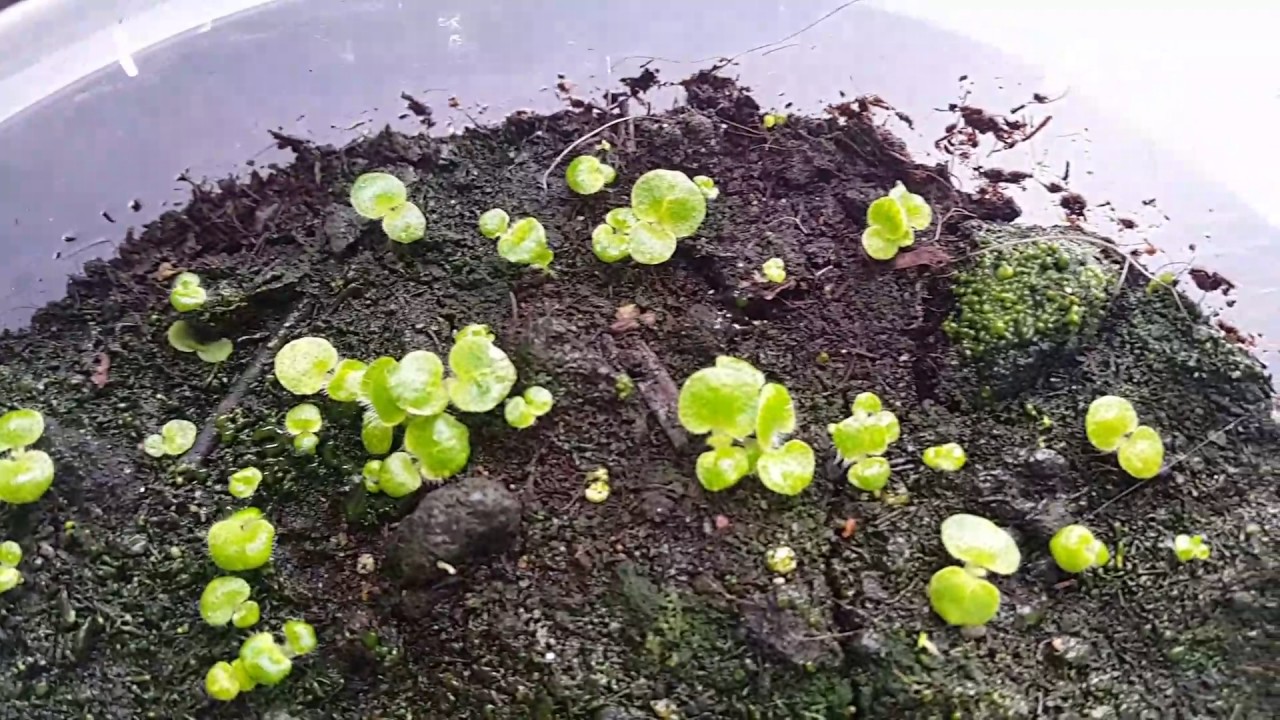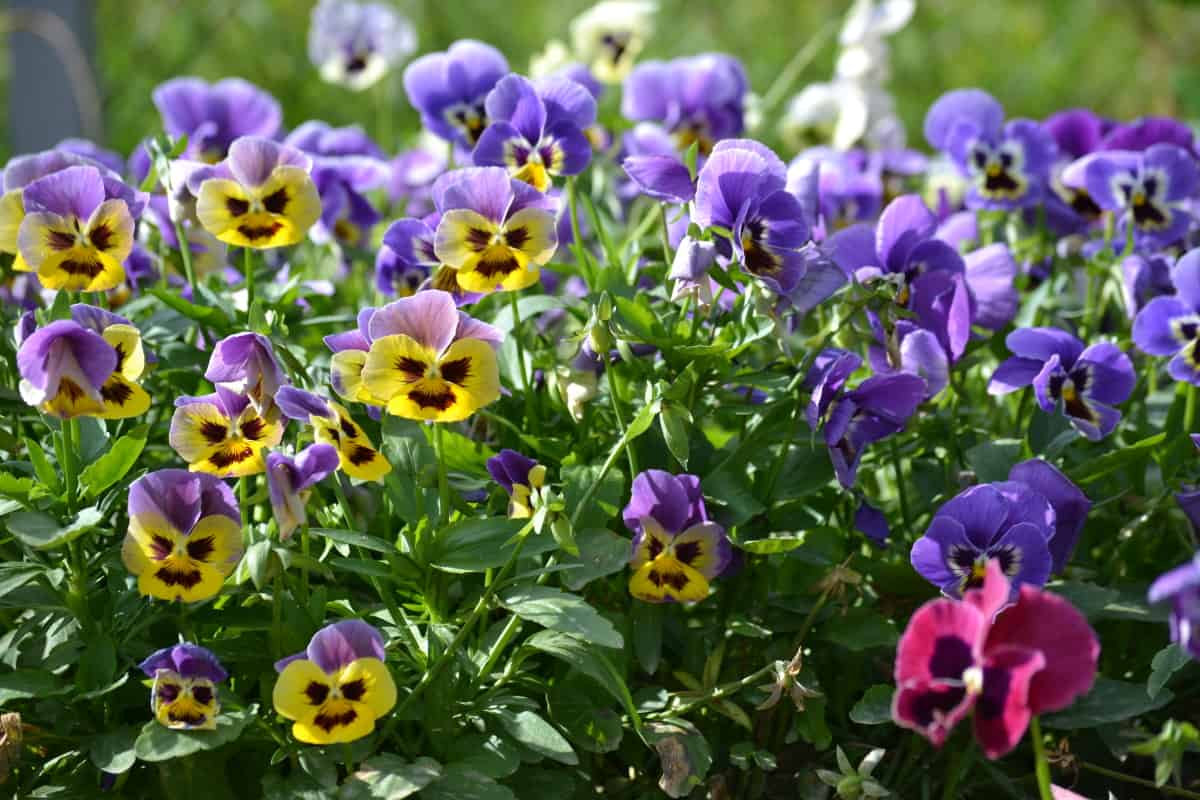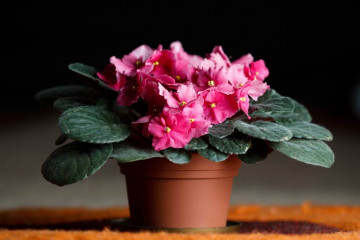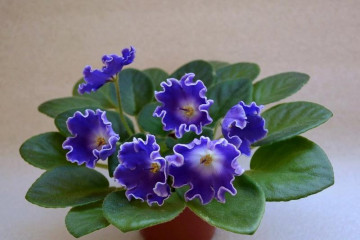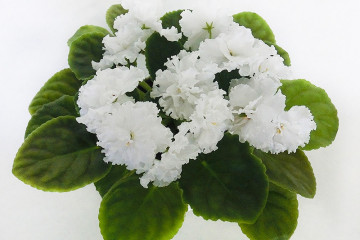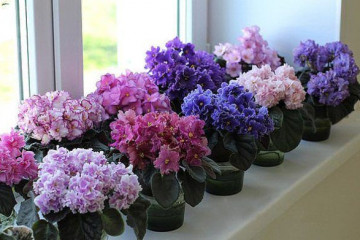Horned violet perennial white - description of cultivation
Content:
Horned violet is a perennial flower belonging to the violet family. The plant got its name due to the fact that behind the flower there is a small shoot that resembles a horn. Although some modern hybrids do not have it at all. Botanists call the horned violet Viola cornuta and therefore, among some flower lovers, the second name "Viola" has stuck.
Violet description
The maximum plant height is 25 cm. The petals are slightly elongated. Outwardly, they resemble small moths or pupae. Each individual plant creates cushion bushes.
Violet inflorescences are single. Inside each flower there is a yellow “eye”. Their size is 3-5 cm. The foliage is dark green in color. It can be either oval or jagged around the edges. The colors of the horned viola are varied, from white to burgundy.
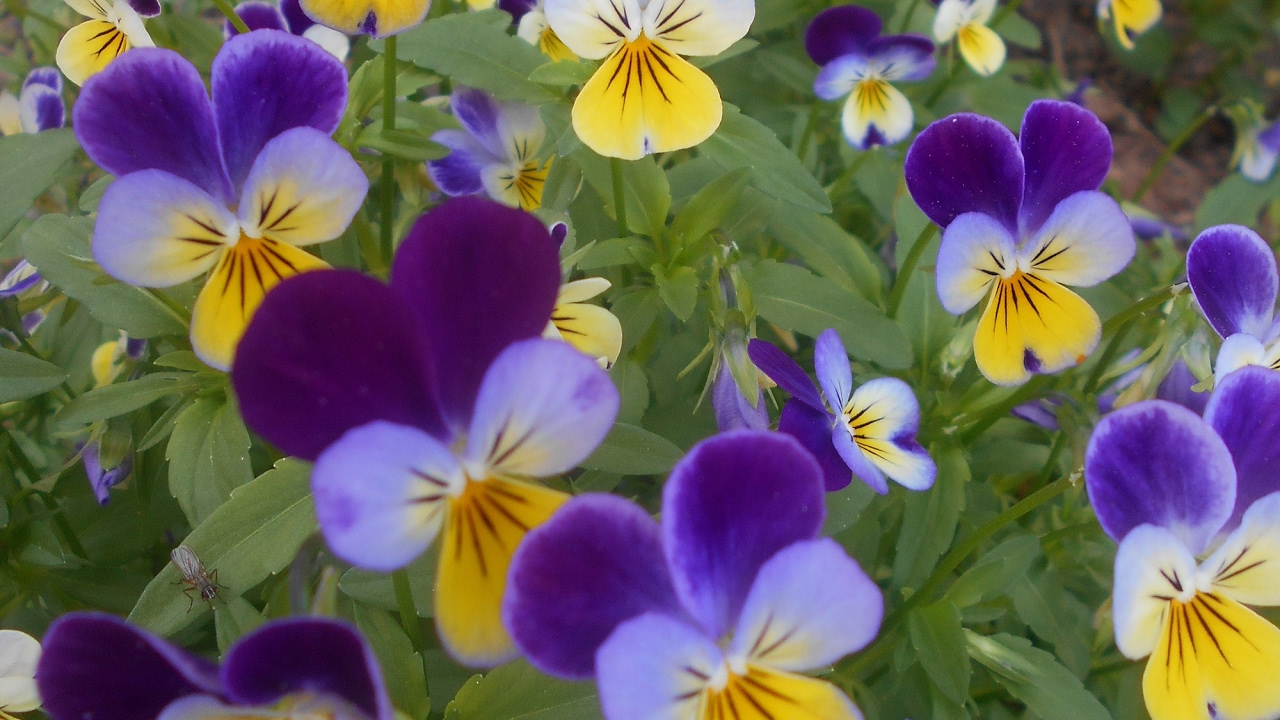
Viola has adapted well to cold weather, and blooms for a long time, pleasing the eyes of those around her with her appearance
Common varieties
Horned violet is an ornamental garden plant. She is accustomed to the cold season and is doing well through the winter in central Russia.
Plants of two types are considered the most common:
- Cornuta;
- Viola x hybrida.
They differ in colors and shades. Flowers can be of the same color and have several shades at the same time. But when caring for hybrid plants, it is always worth remembering that they are less tolerant of the harsh Russian winters. Particular attention should be paid to their shelter, protection from frost and snow.
Briefly about the history of appearance
There are many legends and stories associated with the history of the appearance of this amazing plant. The Slavs said that once a girl from a poor family fell in love with a rich guy. At first he agreed, and then changed his mind about taking her as a wife. Anyuta, that was the name of the young lady, cried a lot and died of despair. And these beautiful flowers grew on her grave. From this and the second popular name of the violet - "Pansies".
Features of growing and care
Perennial horned violet, which is grown in the open field, does not require special care. There is a place for her in every garden.
- Soil selection and preparation
The plant can grow on almost any soil. But abundant flowering occurs on loose, light and drained soils. There is no need for preliminary preparation of the land.
- Planting temperature
It is recommended to plant flowers with the onset of warmth. Because young seedlings are afraid of the cold. The optimum temperature is 23-24 degrees Celsius above zero.
- Lighting
Although Pansy is an unpretentious plant, it will bloom only in light or partially darkened areas of the garden. Moreover, the scorching sun and its direct rays should also be avoided. It will only harm the plant. The ideal option is a spot with "spotted" light.
- Watering and humidity
When watering a plant, you should be guided not by the past rain, but by soil moisture. If it has dried out to a depth of more than 30 mm, it is recommended to water it. Do not pour flowers from the hoses. The ideal option is drip irrigation or using a special spray. Strong pressure can destroy the bushes you plan to grow.
- Spraying and feeding
It is recommended to use organic fertilizers during planting of plants, as well as during their active growth. Only light diluted fertilizers in low concentration are suitable.
How to prepare seeds before planting
It is recommended to start planting violets with seeds in early spring or late in winter. For breeding, it is worth buying special containers with drainage holes. The latter serve to eliminate excess soil moisture. The primer can be used commercially available universal. Although you can choose a special one for violets.
After the container is filled with soil, it is moistened with a spray bottle. Seed distribution is ensured evenly throughout the container. Before sowing, it is better to grind the seeds with sand in a small amount. This will remove the light oily layer. They will sprout faster.
Then everything is covered with a small layer of soil or vermiculite. Then the container must be placed in a plastic bag and tied tightly. Place in a warm place. After a while, you will be able to see the first shoots of the viola.
When and how the horned violet blooms
An ornamental plant blooms for a very long time, decorating the garden landscape. The process begins in early spring and lasts until autumn. During this time, the bushes can become large and large, and then dry out slightly. It all depends on weather conditions, more precisely on soil moisture.
Types of flowers
Violet flowers are single. They are attached to a long and thin stem.
But modern hybrids can resemble real bushes, in which flowers form inflorescences.
Flower shapes
Varietal species of horned violet have a distinctive horn behind the flower. Why the plant got its name. While some hybrid forms could lose it after the next crossing. The edges of the inflorescences can be either straight or slightly curved, wavy.
Flowering period
The flowering period of the horned viola is quite long: from May to September. Moreover, the first spring inflorescences are the most lush and beautiful. With the arrival of hot summer days, they become smaller due to the lack of moisture in the right amount. By the fall, the flowers begin to acquire their original appearance.
Wintering violets
In general, horned violet belongs to frost-resistant plants. But this mostly applies to varietal species. They can safely withstand a drop in air temperature to 23 degrees Celsius below zero. Doesn't even require special shelter.
A completely different conversation about hybrid varieties. In this case, it is best to cover the leaves of the plant with peat or leaf humus. This will protect the bush from low temperatures.
Possible problems in growing horned violets
Violet is an unpretentious and not problematic plant. But under certain circumstances and improper care, difficulties can arise.
Diseases
Sometimes a spider web and black dots appear on the entire plant, from the stems to the flowers. Antifungal agents are recommended.
When spotting attacks and the violet dries up, you need to weed the beds and treat them with chemistry. This is a strong attack that can remain even on the seeds.
When the base of the stem becomes thin and dark, it is a black stem.You need to use anti-fungal agents.
Pests
The main pest is the clover moth caterpillar and the mother-of-pearl violet. To get rid of them, it is recommended to spray with tobacco infusion. As soon as young caterpillars appear, treat the bushes with chlorophos.
Two-horned violet is a very beautiful perennial, which any housewife can plant and grow in the garden. No special knowledge and skills are required. A little time and a beautiful garden at your windows.
